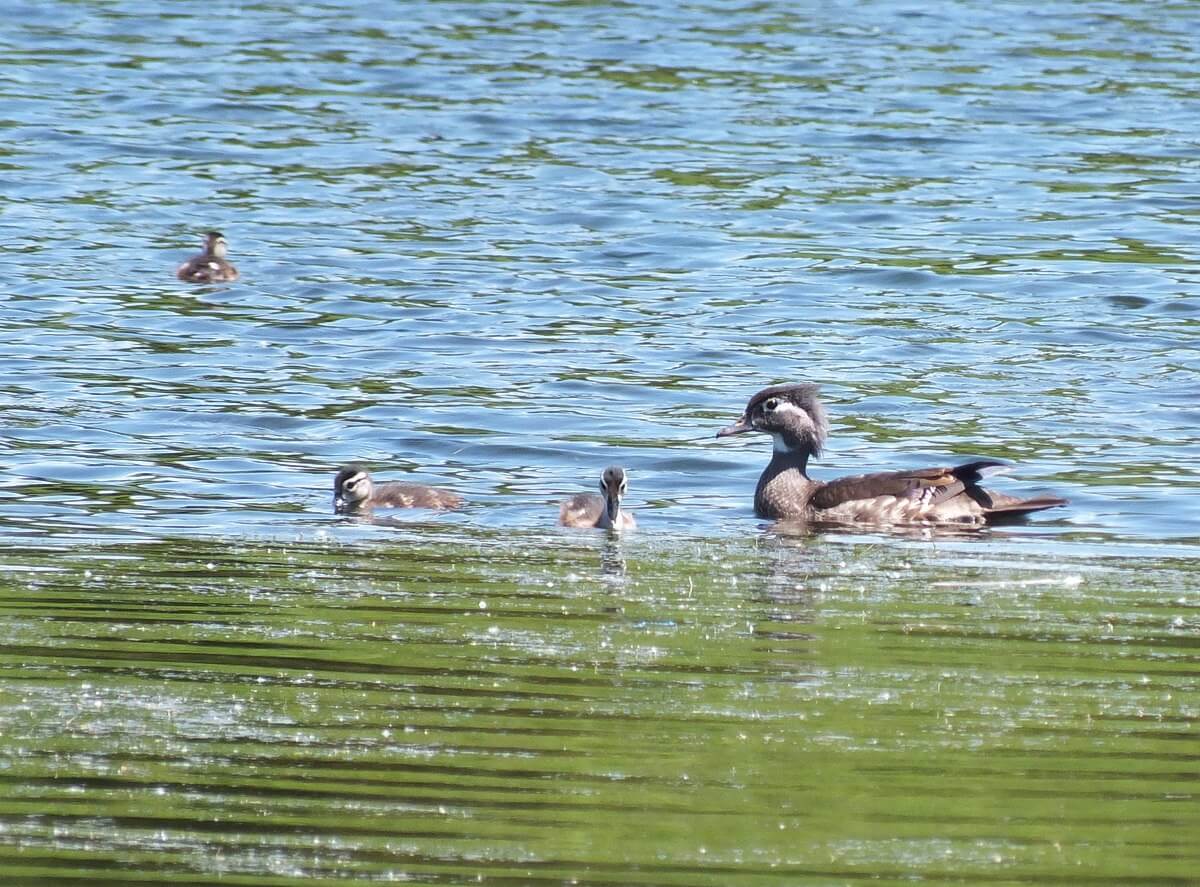Wood Duck And Ducklings At Rouge Park
On Father’s Day, my family teamed up for a hike in Rouge Park, in Toronto, Ontario. For a change of scenery, my brother-in-law suggested a section of trail new to us, beginning just off of Meadowvale Road at the Rouge Valley Conservation Centre. It was towards the end of our day’s explorations that we came upon a female Wood Duck and several ducklings at the ponds along the Cedar Trail.
After hiking the Vista and Orchard Trails, it was time for a picnic lunch and that was enjoyed along the Cedar Trail just as it opens up onto the wetlands and ponds. The normal selection of ducks and geese could be seen floating on the pond, but it was the distinctive colouring and profile of the female Wood Duck that made it easily identifiable.
The male Wood Duck or Carolina Duck is considered the most beautiful of the duck species found in North America, and yet the female is quite elegant in her own right. Although the hen’s plumage is more drab than that of the male, the subtle brownish-grey shading of her plumage is accented by a white-speckled breast, a shimmer of iridescent green on her back, and the exotic white patch about each eye.
Bob and I used the cowpath that leads to the edge of the pond to get a better look at the family of Wood Ducks. I believe there were at least eight ducklings that kept close to their mother, those having hatched only recently. The male Wood Duck was nowhere to be seen, having abandoned the family soon after the eggs were laid in preparation for his feather moult.
Once the ducklings fledged, or took their first flight, which would have been about mid-August, the hen would take leave to another area to undergo her feather moult. The male Wood Ducks would have completed their feather moult by that time, including the loss of their flight feathers. Both the hen and drake would experience a period of flightlessness, but by early autumn, both adults would have regained their ability to fly when new flight feathers grew in. With the young more accomplished at flying by that time, the whole family would circulate throughout their breeding range, feeding and building up energy for their fall migration. With any luck, perhaps Bob and I will spot a male Wood Duck when we visit next spring.
Related:
Razorbill Auks on Carrick-a-Rede in Northern Ireland








this is fascinating..if you can believe it, just last night about a mile outside of the town I live in, I was startled by a hawk flying in front of my van. I saw that it had alighted on the hydro wire on a property with a pond right by the road. I managed to get a couple of blurry pictures and still can’t decide if it was a sharp shinned hawk or a cooper’s hawk. It flew into a pine tree and I exited my van to see if I could get a better look, It flew higher into a nearby tree but something in the pond caught my eye. A pair of small ducks. Again, not great pics, but went home to consult my bird book and it was a male and female wood duck. The female had the white around the eye and the male had the red eye and bright colouring, but he did not have all that fancy feathering on his head, so now I wonder, has he started moulting? I love all the info you give along with your photos…